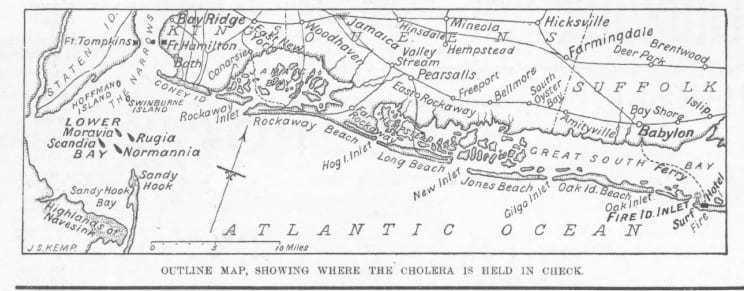In the fall of 2019, during my Fulbright Fellowship in Chile, which coincided with a social revolution that continues to reverberate across Chilean society, a large graffiti-mural caught my attention along a wall in downtown Santiago: “Tu normalidad es privilegio!”
Tag: Epidemics and Pandemics
Everyone is experiencing the “New” World in COVID-19 times; the author penned the feature during April and May 2020, when “Spring” is trying to meet “Summer.”
Part: I, Unexpected Holidays!!!
Giovanni Boccaccio wrote the Decameron in the mid-fourteenth century as a collection of stories that detail experiences of Florentines during an outbreak of the Black Death. He relayed these stories within the narrative framework of a party of young women and men, known as the brigata, who told the stories to each other after fleeing to the countryside to avoid the plague. The women narrators of the brigata outnumber the men seven to three. The brigata are depicted in the John William Waterhouse painting, A Tale From the Decameron, painted over 400 years after Boccaccio wrote the Decameron.
With approval from Governor Flower, Jenkins had purchased the debilitated Surf Hotel from proprietor David Sturges S. S. Sammis for the inflated price of between $210,000 and $250,000. In the 1850s Sammis opened the hotel, an immensely popular and profitable summer resort in its time that had fallen into disrepair by the 1890s. After the purchase Jenkins had the site cleaned up and staffed with a manager and physician, and police guards. In anticipation of the passengers of the Normannia and their five-star quarantine, “Forty French cooks and waiters” were requested but never arrived. They “were stopped at Babylon and stoned,” effectively preventing them from embarking for Fire Island. For selling the property to the state as a quarantine site Sammis was threatened with a tar and feathering by unidentified individuals.
In my previous post, Being Blue in New York, I sketched out a brief history of cholera in New York City and the development of disease theory and of prevention and management strategies over the course of several outbreaks. Today I am going to talk about quarantine, class, and immigration.
 Cholera is a disease that has a long and deadly history. A cholera-like disease is described as early as the 5th and 4th BC in ancient sources, such as the Greek physician Hippocrates and the Sushruta Samhita medical text. It crops up again in 1543 in the Ganges Delta. The disease was endemic to the Ganges Delta, until 1817, when contaminated rice spread from the Delta to the rest of India and beyond following trade routes and military troops to the rest of Asia, Europe and eventually the Americas. A disease which is endemic is native to or regularly found in an area or among a specific group. The WHO claims that “Cholera is now endemic in many countries.” Since this initial spread there have been six cholera pandemics. According to the World Health Organization, we have been in our seventh cholera pandemic since 1961, this one originating in Indonesia, though most of us might not know this. The United States in particular has not been affected since the fifth cholera pandemic, which occurred between 1881 and 1896.
Cholera is a disease that has a long and deadly history. A cholera-like disease is described as early as the 5th and 4th BC in ancient sources, such as the Greek physician Hippocrates and the Sushruta Samhita medical text. It crops up again in 1543 in the Ganges Delta. The disease was endemic to the Ganges Delta, until 1817, when contaminated rice spread from the Delta to the rest of India and beyond following trade routes and military troops to the rest of Asia, Europe and eventually the Americas. A disease which is endemic is native to or regularly found in an area or among a specific group. The WHO claims that “Cholera is now endemic in many countries.” Since this initial spread there have been six cholera pandemics. According to the World Health Organization, we have been in our seventh cholera pandemic since 1961, this one originating in Indonesia, though most of us might not know this. The United States in particular has not been affected since the fifth cholera pandemic, which occurred between 1881 and 1896.
© 2025 Crisis and Catharsis
Theme by Anders Noren — Up ↑





